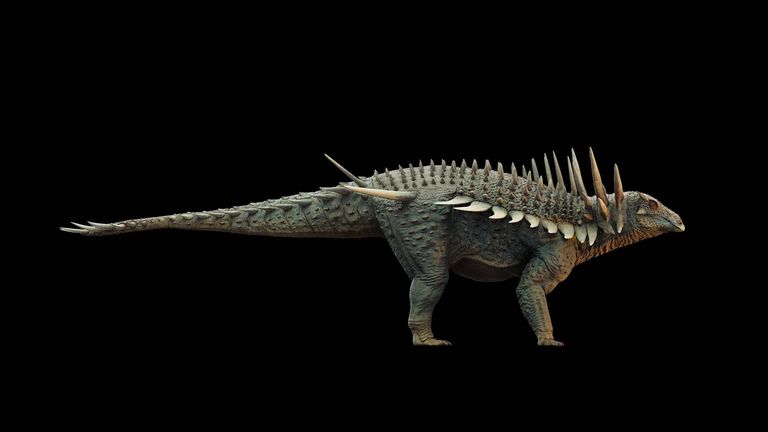
A massively armored dinosaur (Spicomellus) roamed the planet 165 million years ago in an area located in modern-day Morocco. Its body was covered in ornate spikes, some of which were almost a meter long.
- Spicomellus, a heavily armored dinosaur, lived 165 million years ago in modern-day Morocco.
- Its body featured ornate spikes, including meter-long ones, and unique defensive adaptations.
- The creature, classified as an early ankylosaur, represents a significant evolutionary anomaly.
- Its armored characteristics suggest defense against predators and potential mating display functions.
This remarkable prehistoric animal, which scientists have recently characterized, is Spicomellus, the earliest known member of the renowned ankylosaur family and one of the most extreme dinosaurs ever discovered.
The find, located in the Atlas Mountains near Boulemane, offers a unique glimpse inside one of the earliest examples of these “living tanks.”
The squat, four-legged, plant-eating ankylosaurs were known for their tail clubs and body armor.
“The armor of Spicomellus is jaw-droppingly weird, unlike that of any other dinosaur – or any other animal alive or dead – that we’ve ever discovered,” said vertebrate paleontologist Richard Butler of the University of Birmingham in England.
SEE ALSO: A human species unknown to scientists has been discovered in East Africa’s oldest country
“Not only did it have a series of sharp, long spikes on each of its ribs – unknown elsewhere among animals – but it had spines the length of golf clubs sticking out in a collar around its neck,” Butler added.
With its combination of opulent defenses and display characteristics that might have served as both weapons and mating decorations, Spicomellus stands out as a really unique anomaly.
The physical characteristics of Spicomellus
Spicomellus, which could weigh up to two tons and was around 13 feet (4 meters) in length, was equipped with a variety of natural weapons.

Short spikes that were affixed to ribs with upward-projecting tips covered its back.
As seen on Reuters, it had a bony collar around its neck, with plates and many pairs of spikes, one of which was about 87 cm long, and possibly longer in life.
Two enormous spikes protruded from over its hips, forming a menacing appearance that would deter Jurassic predators.
The end of Spicomellus’s body may be its most unexpected characteristic.
Fused tail vertebrae, a characteristic of later ankylosaurs with powerful tail clubs, were discovered in the specimens.
This implies that tail weapons of this type first developed 30 million years earlier than previously thought.
“They could be used in courtship or territorial displays, or to fight against members of the same species during competitions for mates,” Maidment added.
The ramifications are profound: ankylosaurs may have had a survival advantage in an environment full of predators by experimenting with sophisticated protection systems far earlier in their evolutionary history.
DON’T MISS THIS: Final decision for the Nigerian-Morocco $25 billion oil deal pushed to December

Excavated between 2022 and 2023, the fossils are the first significant remains of Spicomellus. Only one rib fragment, which was described in 2021, previously provided information on the dinosaur.
Even though the skull has yet to be found, the recently found remains have given researchers a clear image of its body composition and way of existence.












